Bacteria are the organism that are invisible to the eyes being microscopic and also having single cell and found everywhere.
With concern to the question of are bacteria decomposers most of the decomposers are called to be the microbes that is the organism that are microscopic and it includes the bacteria and the protozoa. They can also tend to include fungi or detrivores.
The concerned raise of opinion for are bacteria decomposers come with the fact that the bacteria are found in places in and out of the organism as well. Some of them can be harmful some vital and some just exits. They can also support many other life forms being both plant and animal with also being helpful in the medicinal or they industrial methods.
They are bacteria decomposers that are the very first microbes that appear on earth which is about 4 billion years earlier and thus are also called to be the oldest known fossils. It is a matter of fact that the fossils seen tend to appear like are bacteria decomposers yet are not totally identical. Thus this is just a derivation of making bacteria the oldest.
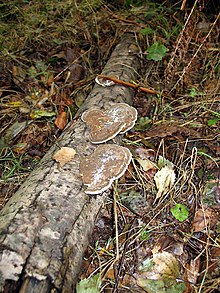
Chemosynthetic bacteria are chemoautotrophs because they’re able to use the energy stored in inorganic molecules and convert them in organic compounds. They’re primary producers because they produce their own food.
Are most bacteria decomposers?
Most of the bacteria seen are the soil residing ones that are abundant in its form with being much common as well.
With regards to the statement from are bacteria decomposers the bacteria are termed to be common natural decomposers. They are much seen in the soil and thus in both of the dormant and vegetative forms are common in soil with getting involved in decomposition.
The involvement of bacteria in decomposition or the stamen for are bacteria decomposers being true mentions that bacteria are into the early parts of decomposition. There are many other decomposers available yet the only one that is single celled are bacteria decomposers. They tend to break the organic matter by secretion of enzymes.
In the green area the part of seeing the hemicellulose or the cellulose are some of the few main complex compounds of carbon that are bacteria decomposers place of inheritance. They are bacteria decomposers seen in spoil that play good role in having these broken down, mostly they are of several types of these that make other enzymes to break the compounds.
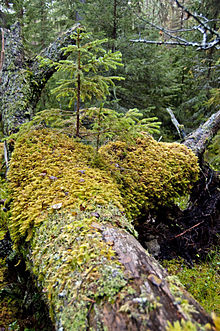
Are all bacteria decomposers?
The ones that are bacteria decomposers can be of several types apart from there division on basis of its shape found in billions.
The ones that are bacteria decomposers break down the plant complex that are polysaccharide with the florescent species making several types of enzymes taking to work its breaking of lipids, proteins and more along with helping dead remains.
The enzymes made by the ones that are bacteria decomposers are also responsible for breaking of xylansases or celluloses or even some of the enzymes also have been linked with breaking of a heteropolysaccharide called pectin seen mostly in the middle lamella and the primary leaf with traces seen in the cell wall of plants in all. They also contain pectate lyases, methylesterase.
What type of bacteria are decomposers?
There are types of bacteria that are mostly divided on based of the size and also some on basis of its habitat.
There are not much that are bacteria decomposers yet some of them can be the Steromyces, acidothermus, cellulomonas, thernobifidia, alpha and beta species of protobacteria, xanthomonas oryzae and a few more of the saprophytic bacteria.
The ones that are bacteria decomposers in the group of acidothermus and Streptomyces make endocelluose that get to break the cellulose down by having it cleaved in the internal bonds of the amorphous sites. The thermobifida, the cellulomonas are bacteria decomposers in soil that make xylanase and exocelullosoe.

Considering the rest part exocellulose takes part in the cellulose breaking process into small sugar that is see via the method of hydrolysis of the end structure chain of the involvement of the ones are bacteria decomposers in the chain ends. Xylanase breaks down to hemicellulose by have the linear degradation of the polysaccharide called xylan.
Types of bacteria decomposers
Decomposers or the ones that are bacteria decomposers are the microbe that tend to feed on the materials that are dead.
Except the abundant microbes that are bacteria decomposers there are many bacteria that shall become the common decomposers in the nature. The types of the ones that are bacteria decomposers are mentioned
As they are seen much in the surrounding thus the dormant and vegetative shapes are much involved in the first decomposition stages. The ones that are bacteria decomposers are the ones mentioned above. In the last category, which are the acidobacteria there are 3 more of classifications being the alphaproteobacteria, the grammaproteobacteria and the bacteroidetes.
Proteobacteria
They are called the purple bacteria and its relatives and make the largest phyla for the ones that are bacteria decomposers and also in the whole bacteria domain. It has many types of bacteria and also have the chemolithotrophs and the heterotrophs. At present there are over 460 to 1600 of these known.
Actinobacteria
They are from the gram positive team and do have the high guanine plus cytosine DNA content. As one of the largest phyla in the ones that are bacteria decomposers this group has the best diversification of organism that are seen in the forest and the water ecosystem. They also are seen with high level of versatility that has been a good impact on the surrounding.
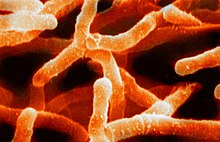
Acidobacteria
They are the ones that are bacteria decomposers and have much variety and distributed in long places. They are the ones that are most abundant on earth. They are both seen in surrounding that are either alkaline to a bit level ir are neutral. They are said to be vital for the carbon cycle and also help in degrading lignin and the cellulose.

How are bacteria decomposers?
The good examples of the decomposers are the bacteria and fungi that take the nutrient from the nonliving matter being it animal or plant.
The decomposers do have the ability to get the organism dead to break in small pieces and then to make new compounds out of it. Thus, the ones that are bacteria decomposers are used to restore the nutrient cycle in nature via having the compost controlled.
Compostable or the waste that are biodegradable is the once that were on alive and now are being broken down by the ones that are bacteria decomposers and thus are also recycle by the ones called are bacteria decomposers. The statement for are bacteria decomposers is true for they are also used in the process of industries in order to clean up the oil spill or composition of manures.

How do bacteria decompose?
The ones that are bacteria decomposers are said to be the saprophytes as they tend to break down the matter of the dead onto organic materials
Saprophytic ones include the nutrition of both the fungi and those are bacteria decomposers out of the cell into soil or the dead matter. The enzymes are then digested into the organic material and called extracellular digestion.
The digestion of the products is made to absorb from the decomposing of the animals and the plants. The matter for all those that are bacteria decomposers decomposition takes place by three conditions being the temperature is warm, good content of moisture, having an organism to decompose in a large surface area. There is a decrease in its rate at anaerobic condition.
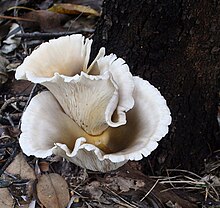
What does bacteria break down?
The ones that are bacteria decomposers tend to breakdown the substances that re food and cannot be digested like that of the fiber and few starch.
Bacteria make the enzymes that digest the carbs in the cell wall of plants. Most of the nutrition taken by the ones that are bacteria decomposers of the plant will be a waste without the ones that are bacteria decomposers. These help in getting the starch digested.
These bacteria are said to be the key component of the nitrogen and the carbon cycle. Like that of the photoautotrophs or the plants and also the chemoautotrophs they take in carbon dioxide from air and transfer it to the cell carbon. This implies that the carbon is fixed or is also sequestered in the bacteria.
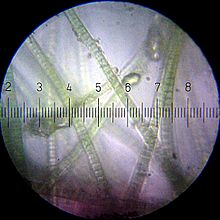
Are photosynthetic bacteria decomposers?
Bacteria do have their energy taken from the method of photosynthesis along with also getting the nutrients.
They obtain energy by photosynthesis and also take in nutrient in the same way. Another method of taking in the nutrient is the method of decomposition. Photosynthesis is vital for the life of the consumers and producers all. The organism that are photosynthetic are called photoautotrophs.
Decomposers beak down the organic matter and also is for plants and the waste of animals but yet they also recycle the nutrients for photosynthesis. Most of the decomposers are said to be the fungi, bacteria or the protozoa. They can be the detrivores, the termites, millipedes, the earthworm and the ones that are bacteria decomposers.

What does bacteria decompose in the ocean?
Both the bacteria and the archaea that are said to be the prokaryotes tend to break methane during making of energy.
The bacteria that are bacteria decomposers or the chemosynthetic ones tend to use the chemical from earth to prepare its food and do not use sunlight. These are the ones that are famous for giving food to deep sea ecosystem or deep in ocean.
There is no light at the sea level with the zero ray of hope for the phosynthetic bacteria to stay alive. They are said to be the pervasive and the play a good role with different uses to the marine life from being the basic of any food chain to having the marine energy under its control and giving them nutrients, those that are bacteria decomposers are also vital for the essential heath of the ocean life.

Bacteria decomposers nutrients
Decomposers get nutrients and energy by breaking down dead organisms and animal wastes. Thus the statement for are bacteria decomposers true.
More importantly, decomposers make vital nutrients available to an ecosystem’s primary producers usually plants and algae. Decomposers break apart complex organic materials into more elementary substances like water and carbon dioxide, plus simple compounds containing nitrogen, phosphorus, and calcium.
Through this process, decomposers release nutrients, such as carbon and nitrogen, back into the environment. These nutrients are recycled back into the ecosystem so that the producers can use them. Scavengers and decomposers get their energy by eating dead plants or animals. Rotting food or food that’s gone ‘bad’ doesn’t look or smell great but it contains a wealth of nutrients, including carbon, nitrogen, and phosphorous.
Most are decomposers that consume simple carbon compounds, such as root exudates and fresh plant litter. By this process, bacteria convert energy in soil organic matter into forms useful to the rest of the organisms in the soil food web. A number of decomposers can break down pesticides and pollutants in soil. If nutrients weren’t released and recycled for use by other living organisms, eventually it would all be locked up or non-decaying tissues.

Which bacteria is not a decomposer?
All of the bacteria along with the dung beetles, the fungi, the earthworm are said to feed on decaying and called to be decomposers.
The ones that are bacteria decomposers are the Pseudomonas fluorescents and the Bacillus subtilis. On these apart the rest are not being proved to accelerate the making of the humus in the soil or even the generation of the compost.
With a very few exceptions to are bacteria decomposers the Bacillus subtilis is the one that is best category of bacteria and is used for model microbes being the gram positive one. They are also rod shaped and make endospores that can survive in harsh conditions including desiccation and heat. They do feed on additives in animal and agriculture husbandry. This makes are bacteria decomposers partial true.
The pseudomonas fluorescents are in common the gram negative ones and are also rod shaped. They are of the genus Pseudomonnas having 16s RNA. Mostly these type of bacteria that do not fall for the ones that are bacteria decomposers tend to be non-pathogenic yet sometimes infect the people having impaired immunity system. This is called as immunocompromised. Thus except for this are bacteria decomposers is correct.
Bacteria decomposers as decomposers
Detritivores is a type of decomposer like the fungi, microorganisms and bacteria. Bacteria and fungi are the main groups of decomposer.
Most are decomposers that consume simple carbon compounds, such as root exudates and fresh plant litter. By this process, bacteria convert energy in soil organic matter into forms useful to the rest of the organisms in the soil food web. A number of decomposers can break down pesticides and pollutants in soil.
Decomposers are heterotrophic, which means they get their energy from ingesting organic material. A dead organism provides nutrients for decomposers like bacteria and fungi to use in order to grow and reproduce, propagating their own species. They break down the cells of dead organisms into simpler substances, which become organic nutrients available to the ecosystem.
Are denitrifying bacteria decomposers?
These are anaerobic bacteria that thrive in conditions where there is little oxygen in the soil. This often happens when the soil becomes water-logged so all the air spaces are flooded
These aerobic bacteria live in the soil. When an organism dies decomposers digest the proteins and DNA that are found in the cells of the organism and produce ammonium ions as a waste product. Decomposers will also break down the molecules in animal feces and will decompose the urea in animal urine into ammonium ions.
Denitrifying bacteria are “bad news” for Nitrogen cycle as they get their energy by taking nitrates from the soil and converting them into nitrogen gas. This obviously reduces the nitrate available to the plants with roots in the soil and this is one of the reasons farmers like to keep soil well aerated for their crops. The plant benefits as these bacteria produce nitrate ions that the plant can absorb and use to make proteins.
Are chemosynthetic bacteria decomposers?
Chemosynthetic bacteria are chemoautotrophs because they’re able to use the energy stored in inorganic molecules and convert them in organic compounds
Chemosynthetic bacteria are either autotrophic heterotrophic and can therefore also be decomposers as if they get their energy from organic matter. However, if they get their carbon from carbon dioxide, they cannot be classified as decomposers.

Decomposers feed on dead things: dead plant materials such as leaf litter and wood, animal carcasses, and feces. They perform a valuable service as Earth’s cleanup crew. Without decomposers, dead leaves, dead insects, and dead animals would pile up everywhere. A decomposer is a living thing that gets energy by breaking down dead plants and animals. Fungi and bacteria are the most common decomposers. This makes are bacteria decomposers true.
Also Read:
- Does mitochondria have double membrane
- Unsaturated fat examples
- Plant cell mitochondria functions
- Nucleoside its important structural properties
- Aggregate fruit examples
- Butterflies characteristics
- Does mitochondria have circular dna
- Functions of mitochondria
- Mesophilic bacteria examples
- Diffusion vs advection
I am Ankita Chattopadhyay from Kharagpur. I have completed my B. Tech in Biotechnology from Amity University Kolkata. I am a Subject Matter Expert in Biotechnology. I have been keen in writing articles and also interested in Literature with having my writing published in a Biotech website and a book respectively. Along with these, I am also a Hodophile, a Cinephile and a foodie.

Hi Fellow Reader,
We're a small team at Techiescience, working hard among the big players. If you like what you see, please share our content on social media. Your support makes a big difference. Thank you!